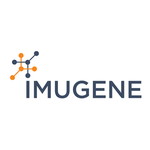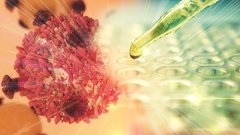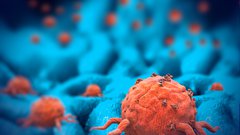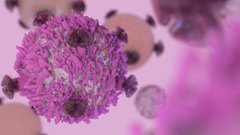Is IMU on the path to a viable cure for cancer?
Hey! Looks like you have stumbled on the section of our website where we have archived articles from our old business model.
In 2019 the original founding team returned to run Next Investors, we changed our business model to only write about stocks we carefully research and are invested in for the long term.
The below articles were written under our previous business model. We have kept these articles online here for your reference.
Our new mission is to build a high performing ASX micro cap investment portfolio and share our research, analysis and investment strategy with our readers.
Click Here to View Latest Articles
The views and opinions expressed in this article are those of Leslie Chong. You should not act on these views or opinions without undertaking your own due diligence as to the voracity and accuracy of her views and opinions. These views and opinions may be wrong or misleading.
Leslie Chong has spent 19 years in leading clinical and departmental oncology research. On November of 2016, Leslie became CEO of Imugene (ASX:IMU) — a Melbourne based biotech firm striving to revolutionise B cell technology and immuno-oncology. Imugene began clinical trials for its HER-Vaxx Phase 1b/2 at the end of August. Hoping to glean valuable safety and immunogenicity data from early stages of the study, Leslie is putting the pieces together to make the next step towards expanding Imugene and creating a viable cure for cancer.
MitchelLake’s Robin Block spoke with Leslie to find out how technology is changing biotech, and how Imugene is transforming the general understanding of cancer treatment.
What is immuno-oncology, in a nutshell?
LC: Immuno-oncology is about invoking your immunity to do what it is supposed to do — identify cancer, or a malignant growth in your body, and get rid of it. The goal is to create a vaccine that can produce an immune response capable of delivering results consistently over time — hopefully giving people back their life.
What has really become exciting in this field over the last five years is that we have entered an area where we can actually put the word cure in front of cancer — in a way that we have never been able to do before.
How is what you are doing with IMU different to the research being done by other biotech firms?
LC: Most biotech and pharmaceutical companies are focused on T cell modulation. One of the reasons I joined Imugene is the company’s focus on invoking a wider range of the immune system — specifically B cells and antibody production. This has kept me riveted as we start our enrollment into clinical studies for HER-Vaxx. We are in a position to develop a platform play whereby we can take any known monoclonal antibody and reverse engineer that to create our own B cell peptide vaccines. This will provide a pipeline of B cell technology that we can pick and choose from, moving forward.
It should be noted, however, that this is an early stage biotech company and success is no guarantee. Investors should seek professional financial advice before making an investment.
My focus has primarily been on the science. The important thing for us is getting good clinical results. The world needs a B cell peptide vaccine in the arsenal against cancer. If we can prove what we say we can do — safety and immunogenicity — even from the first Phase 1b, the pharma and biotech companies should take notice. One of my great mentors at Genentech would say, ‘follow the science and the money will come’. It’s my motto – only through great science and development could one anticipate the market to follow.
For me, there is a direct personal and scientific interest in this work. I lost my father to cancer, my mother is a cancer survivor and nearly everyone I know has been devastatingly touched by cancer in some way. I want an early look at this data because I want to understand how we can move this therapy into later stages of development and affect how we can live in a post-cancer world. Even in this first cohort of patients — anywhere between 3-6 people — we can gain important data that will allow us to look at dose escalation and how we can position this therapy. We have a gorgeous new formulation for our vaccine that is commercially and clinically more viable than ever before.
How have you brought the company to this point of breakthrough, and how have you approached building your team?
LC: We currently only have a few permanent employees outside of the board members. We all have a commitment to produce great science — innovative and transformative medicine that can affect the lives of cancer patients. Because of my connections to experts within pharma companies from my previous positions, I have been able to utilise consultants who are leading figures in oncology research on an as-needed basis.
What I have looked for, in both hires and consultants, is experience. Drug development is a convoluted and complex area — my team is made up of chosen people that have the experience to take a drug forward. Our Chief Scientific Officer, a co-inventor, is a world leading immunologist — Prof. Dr. Ursula Wiedermann from the University of Vienna. Prof. Dr. Christophe Zielinski, who heads up our scientific advisory board, is also the Editor and Chief of the European Society of Medical Oncology (and president nominee). We have world talents who are willing to roll up their sleeves and get to work with me to develop our product.
The small number of permanent staff, however, does mean that we all have to wear several different hats. The ability for us all to multi-task and simultaneously think on a macro and micro level has been a challenging learning curve. I think a secret to getting great results is giving people a purpose. I want my team to get up every morning and think that they are going to work to develop a product that could actually change the lives of millions of people.
Everyone who works for Imugene could be described as someone who is doing what they do best and loving the journey. The clinic is where the rubber really hits the road. We have put a lot of thought into making the drug a viable product in the oncology landscape.
Taking a look at the future for Imugene, how are things changing in the industry?
LC: One thing that is really changing in the biotech space is that technology is rapidly accelerating the rate of development. Generating data and computational analyses are the main aspects of drug development. Data opens new ideas and new pathways. If we don’t know certain things about a patient population, we are less capable of calculating accurate results.
Biotech companies are seeing great results with checkpoint innovation — T cell modulation — and building on that to get drugs approved in a greatly reduced timeframe. What used to take 15 years, can now be completed in less than five. That does not mean, however, that the costs have gone down. Even though we have shortened the study timeframe, we are actually putting the same number of patients, if not more, through trials. Twenty years ago, a Phase 1 study would have 40 patients. Now the same program will have upwards of 1000s of study participants. That has allowed access to a much larger and more proportional dataset, and earlier on. Regulators are also coming to terms with the accelerated rate of development. The FDA has come up with new guidelines that will allow for a much more open process that is enabling a faster pipeline to trials. If there is a good product that needs to be developed, you might be able to skip a few steps to get drugs to patients sooner.
There is a growing alignment between academia and industry. Machine learning is certainly a huge part of the future on both fronts. There are great data engines out there that we certainly intend to utilise once our study matures. The introduction of technology and software capable of genomic sequencing is helpful in looking at trends and diagnostics. With radiology, for example, they are developing new ways of looking at scans and measuring growth, regrowth and non-growth in a more precise and automated manner than currently exists. Much the same is occurring in the field of biopsy; these are all technologies that we hope to utilise in drug development.
However, none of this precludes the need for experts — particularly in diagnosis. You always need people around to make sense of anomalies. The more data you have, the better it is. But data sets or points that fall out of the area curve are often beyond a machine’s capability to put in perspective. I would never exclude experts, but machine learning is certainly going to help make sense of median trends in the near future.
Our current clinical tests are in three areas: we have HER-Vaxx, which is already in the clinic; we are developing products called mimotopes, which is the platform play that will allow us to develop a pipeline of B cell technology; and the third line of development is arginine modulators. There is a lot of work to be done with arginine modulators to produce treatments that complement existing therapies to create significantly better patient outcomes. I see Imugene as a transformative force within immuno-oncology, expanding B cell technology to a whole host of novel targets.
Leslie, thanks for your time.
General Information Only
S3 Consortium Pty Ltd (S3, ‘we’, ‘us’, ‘our’) (CAR No. 433913) is a corporate authorised representative of LeMessurier Securities Pty Ltd (AFSL No. 296877). The information contained in this article is general information and is for informational purposes only. Any advice is general advice only. Any advice contained in this article does not constitute personal advice and S3 has not taken into consideration your personal objectives, financial situation or needs. Please seek your own independent professional advice before making any financial investment decision. Those persons acting upon information contained in this article do so entirely at their own risk.
Conflicts of Interest Notice
S3 and its associated entities may hold investments in companies featured in its articles, including through being paid in the securities of the companies we provide commentary on. We disclose the securities held in relation to a particular company that we provide commentary on. Refer to our Disclosure Policy for information on our self-imposed trading blackouts, hold conditions and de-risking (sell conditions) which seek to mitigate against any potential conflicts of interest.
Publication Notice and Disclaimer
The information contained in this article is current as at the publication date. At the time of publishing, the information contained in this article is based on sources which are available in the public domain that we consider to be reliable, and our own analysis of those sources. The views of the author may not reflect the views of the AFSL holder. Any decision by you to purchase securities in the companies featured in this article should be done so after you have sought your own independent professional advice regarding this information and made your own inquiries as to the validity of any information in this article.
Any forward-looking statements contained in this article are not guarantees or predictions of future performance, and involve known and unknown risks, uncertainties and other factors, many of which are beyond our control, and which may cause actual results or performance of companies featured to differ materially from those expressed in the statements contained in this article. S3 cannot and does not give any assurance that the results or performance expressed or implied by any forward-looking statements contained in this article will actually occur and readers are cautioned not to put undue reliance on forward-looking statements.
This article may include references to our past investing performance. Past performance is not a reliable indicator of our future investing performance.






